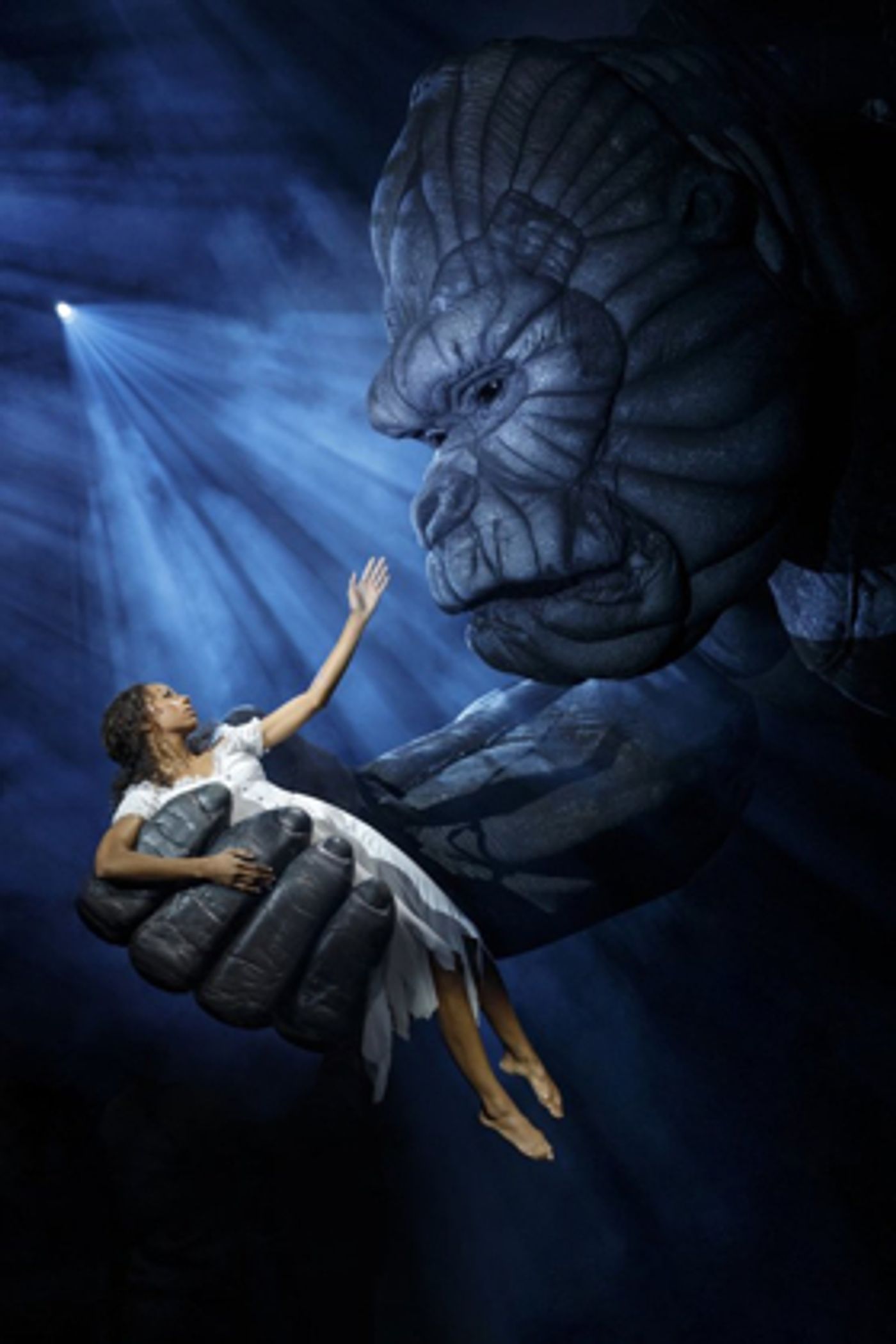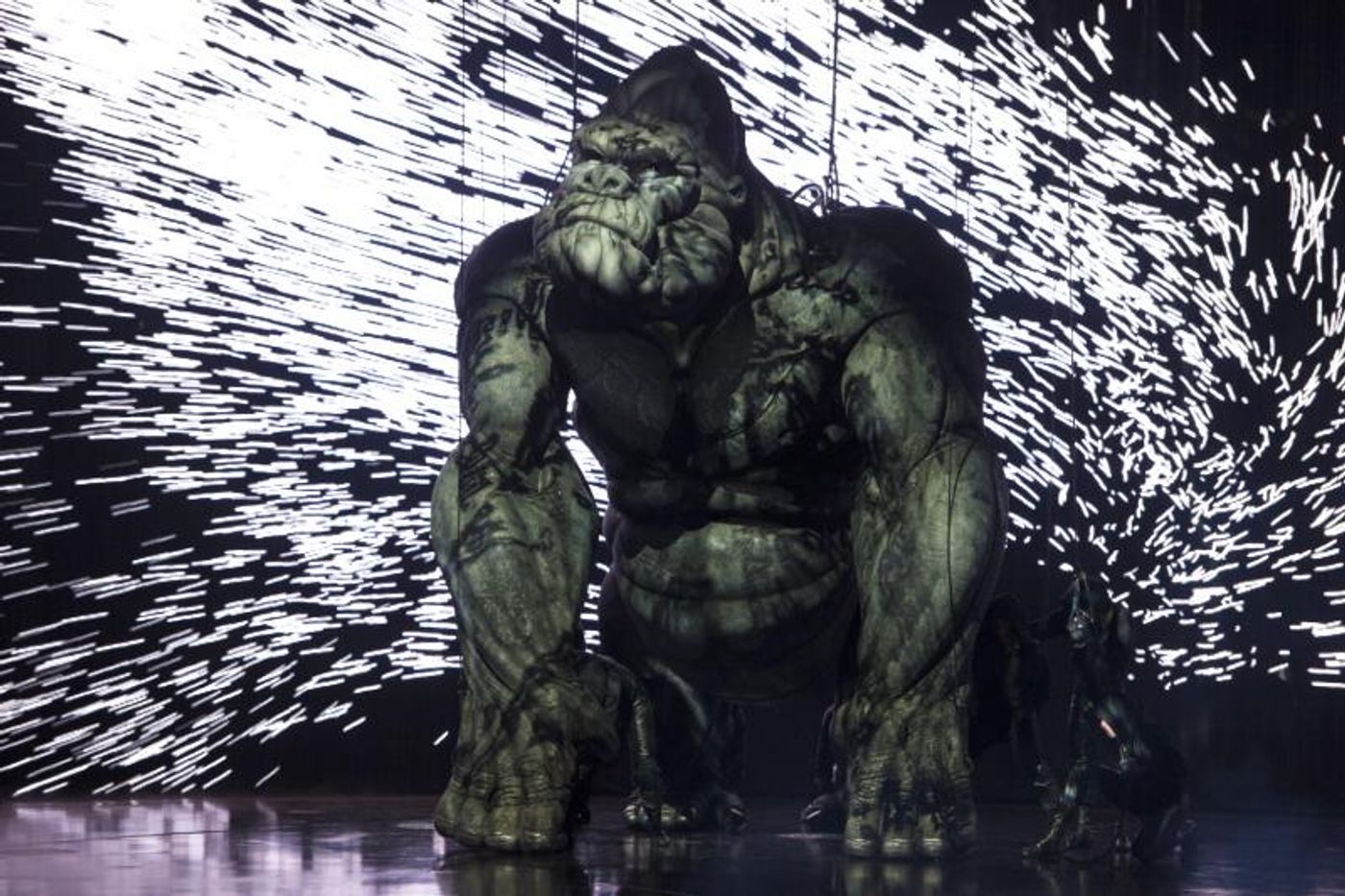Long Live the King: The Lasting Cultural Impact of KING KONG

Today, King Kong the Musical opens on Broadway at the Broadway Theatre. Many people are probably wondering, "how did King Kong end up a musical?" It does seem puzzling at first, to think a film about a giant gorilla can transcend film screens and land on the stage as a musical, but when you think about the impact King Kong has made on our culture for almost a century, it begins to make more sense.
The original King Kong film debuted on March 2, 1933. The film was conceived by Merian C. Cooper, who was fascinated by gorillas at a young age. When he entered the movie business years later, he got the idea to make a "terror gorilla picture." When you hear that concept, you think the film will be a scary movie or some sort of action thriller. King Kong turns out to be a much more layered film. The film does revolve around the spectacle of a giant gorilla, but, what makes it more impactful is that very gorilla.
The original film sees Kong taken from his home on Skull Island to be exhibited to humans as the "Eighth Wonder of the World." After escaping from captivity, Kong ascends the EMPIRE State Building in one of the most iconic scenes in film history. To most people, Kong is a monster who climbs the building intent on destruction. However, he only climbs it in his attempt to save Ann Darrow, the woman who Kong felt protective over.
Since the first film in 1933, there have been 7 films about Kong, and this theme of his ability to feel continues into the remakes and other adaptations. In the 1976 film King Kong, after saving Dwan, an aspiring actress, from the natives of the island he lives on, he becomes infatuated with her, even washing and drying her after she falls into mud. She was able to tame his violent animal instincts and reveal the soft hearted side of Kong. The 2005 remake by Peter Jackson continues with this notion that Kong may be a beast, but he is capable of emotion. (The 2005 film is a true remake of the original 1933 film, with smaller changes than that of the 1976 film's story. Jackson's Kong, however, shows off Kong as the Eighth Wonder in a slightly different way, on Broadway!)
 The many Kong films make one thing clear: he may be a giant beast, but he's also someone capable of emotions. There is a reason that Kong has lasted 85 years. Monsters come and go, but a complex character that illustrates the struggle of INSTINCT over emotion resonates with people. Kong, on paper, should be a monster. He's massive and can destroy a city in minutes, but in reality, he's much more than that. Kong's want to protect Ann/Dwan makes him much more complicated than just a monster. He's a living being who can feel. Kong is the representation of "don't judge a book by its cover." He continues to defy expectations with his true nature, one that is overlooked when he is provoked or threatened. Kong teaches us that there is much more to someone than meets the eye.
The many Kong films make one thing clear: he may be a giant beast, but he's also someone capable of emotions. There is a reason that Kong has lasted 85 years. Monsters come and go, but a complex character that illustrates the struggle of INSTINCT over emotion resonates with people. Kong, on paper, should be a monster. He's massive and can destroy a city in minutes, but in reality, he's much more than that. Kong's want to protect Ann/Dwan makes him much more complicated than just a monster. He's a living being who can feel. Kong is the representation of "don't judge a book by its cover." He continues to defy expectations with his true nature, one that is overlooked when he is provoked or threatened. Kong teaches us that there is much more to someone than meets the eye.
This message makes the story of King Kong very adaptable to a stage musical. However outlandish or far-fetched an idea may seem, what makes a musical successful is the emotion it evokes and the story it tells. Musicals can take place in Oz, France, or even under the sea, they can be about circuses or shoe factories or pie shops or giant gorillas, but as long as they make you think, and more importantly, feel.
Photo Credit: Joan Marcus
Powered by
|
Videos

